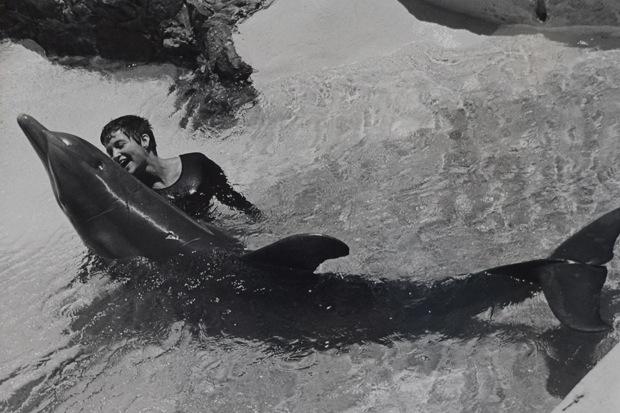All the good non-fiction things that were ever on TV — from Kenneth Clark’s Civilisation to David Attenborough’s Planet Earth (the bits where he’s not proselytising about climate doom, I mean), from Andrew Graham-Dixon’s arty jaunts to Italy to Jonathan Meades’s bizarro forays into architecture, from The World at War to all those more recent war porn documentaries narrated by Sam West, from Werner Herzog’s Little Dieter Needs To Fly to Louis Theroux doing a number on Jimmy Savile — have one thing in common: they were all made by middle-aged men.
Middle-aged men are the business. They’re comfortable in their skin; they’ve got hinterland and character; they’ve put in the hard yards and the long hours getting to know their stuff in that obsessive way only men really do; they’ve replaced the glibness and flashiness and irritating bumptiousness of youth with sly wit and bruised wisdom; they’ve mastered their craft, they know their shit — and now they’re giving the rest of us the benefit of their expertise, as middle-aged men have been doing since time immemorial.
But not any more, apparently. Not according to Cassian Harrison, the editor of BBC Four. ‘There’s a mode of programming that involves a presenter, usually white, middle-aged and male, standing on a hill and “telling you like it is”. We all recognise the era of that has passed,’ Cassy-babes recently told Edinburgh Television Festival.
And he does have a point. Not because he’s right, but because mostly white, middle-aged male TV bosses like Cassy-babes (current salary, courtesy of you and me the licence-fee payers: £170,000) have made it so. They’ve taken away the stuff that we like — war, middle-aged male presenters etc. — and replaced it with stuff we don’t like nearly as much — wittering females, worthiness to do with race or disability, etc. All because of some nonsense they were taught about gender, diversity or social justice, which no one cares about in the real world — only at the BBC or on Common Purpose training courses. (See Toby Young, p52.)
That’s why about the only thing I can bear to watch on TV now is Bondi Rescue. It’s about rough, simple, cheerfully thick lifeguards (all with names ending in ‘O’ — Deano, Hoppo, Taco, Quinno, etc.) doing manly things on Bondi beach in Sydney, Australia — rescuing swimmers, vomiting with sheer exhaustion as they compete in fitness contests, riding fast over big waves on jet skis, joshing one another and, most importantly, deploying the green whistle.
I’ve watched so many episodes now that I reckon I could easily be a Bondi lifeguard. (Jameso?) If someone’s struggling on the left or right edge of the beach (where the rips and the jagged rocks are, mate) you get out there quick with your paddle rescue board — the attached camera capturing the beaming gratitude of your rescuee. If someone’s on the verge of death you call the ‘ambo’; but anything more minor than that — a cut lip in the skateboard park, a dislocated shoulder, a broken leg, a dog bite on the penis (this actually happened) — then out comes the green whistle. It’s a methoxyflurane inhaler which you suck on — and which makes you almost instantaneously relaxed, cheerful and giggly.
What I also love about Bondi Rescue is that it’s so reassuringly uneventful and samey. Each week, the warm, yet urgent tones of narrator Osher Günsberg and the clever cutting-in of the previews try to persuade you that this time something really dramatic and life-threatening is going to happen. But it almost never does. The lost kid gets found; the swimmer gets ashore; the fatal injury proves on closer examination to be a nasty scratch.
Admittedly this makes it quite dull — but also pleasantly unstressful. On those rare episodes where something seriously bad happens — when say, that poor Brazilian dancer was paralysed in a freak accident; when they couldn’t revive the person who had drowned — it feels ugly and voyeuristic. Drowned people have a horrible grey pallor and spongy bloatedness which is horrid to watch on TV, even when their face has been pixellated out.
That said, if there was one thing they could do to improve the series (now in its 13th season) it would be to remove all the shark nets protecting the bay. As I recall there has only ever been one shark attack in the series’ entire run and that took place off camera because it was in the evening, after the lifeguards have gone home (and when not uncoincidentally sharks are more likely to attack).
I know this slightly contradicts what I said earlier. But seriously: what is the point of setting a reality TV series on a beach in the shark-attack capital of the world if you’re going to have stupid nets warding off the main attraction? I want to hear those shark klaxons blaring; I want to see the aerial shot of the sinister black shape swishing through the surf; I want the terrified figures fleeing the water yelling ‘shaaaaark!’







Comments